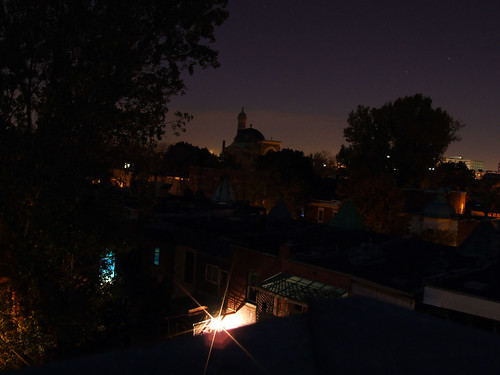Is Mile End at the pinnacle of coolness? Some think so. The eclectic, multicultural neighbourhood now finds itself at the centre of Montreal’s music and art scenes, brimming with the kinds of creative jobs that Richard Florida promises will catapult Montreal into the top ranks of the new economy. But what about the future? Will rents continue to rise, pushing out the very people that made Mile End so desirable in the first place? It’s a cycle of gentrification that has repeated itself over and over again throughout the developed world.
In a series this weekend in the Gazette, Mile End writer Marianne Ackerman (whose 2006 series “A Century in This House” explored Mile End’s social history through the previous inhabitants of her Waverly St. cottage) explored the changes underway in her neighbourhood. On Saturday, she looked at it as a centre of creative employment, with dozens of new small businesses opening under the ever-expanding influence of software giant Ubisoft, whose Canadian headquarters is located in the Peck Building at St. Viateur and St. Laurent. On Sunday, she looked at the mushrooming land values that are driving up rents and enticing many long-time residents to cash in and move. Finally, yesterday, she looked at the art and music venues that have helped Mile End become “one of Canada’s top five creative postal codes.”
Ackerman’s series works best as a snapshot of a neighbourhood in transition. Mile End’s history is fascinating and, as Ackerman points out, its gentrification plays in some ways to the pretensions of its late nineteenth-century developers, who envisioned a leafy, middle-class enclave near the mountain. Despite its gradual shift upscale, Mile End has also held on to its tradition of being a place of both work and residence. The big loft buildings that were formerly part of the rag trade are now home to video game designers and architects. Home-based entrepreneurs have been replaced by writers and musicians, but the end effect is still the same.
“Thanks to good timing and good bones, the neighbourhood is showing signs of resistance to the worst aspects of change. A healthy economy and strong community feeling just might provide the necessary stabilizing elements to save Mile End from a fate worse than obscurity,” writes Ackerman. We’ll see.

